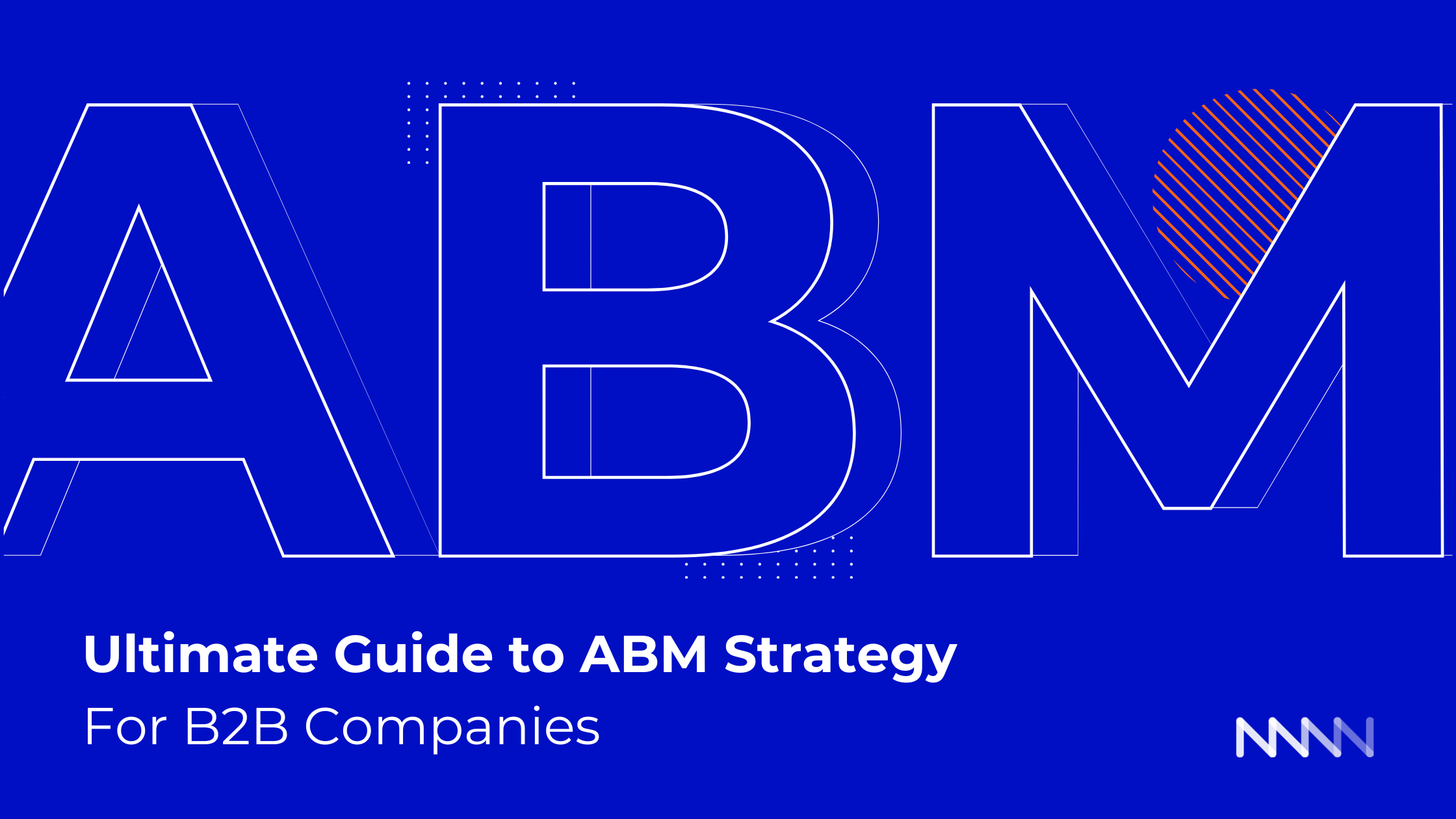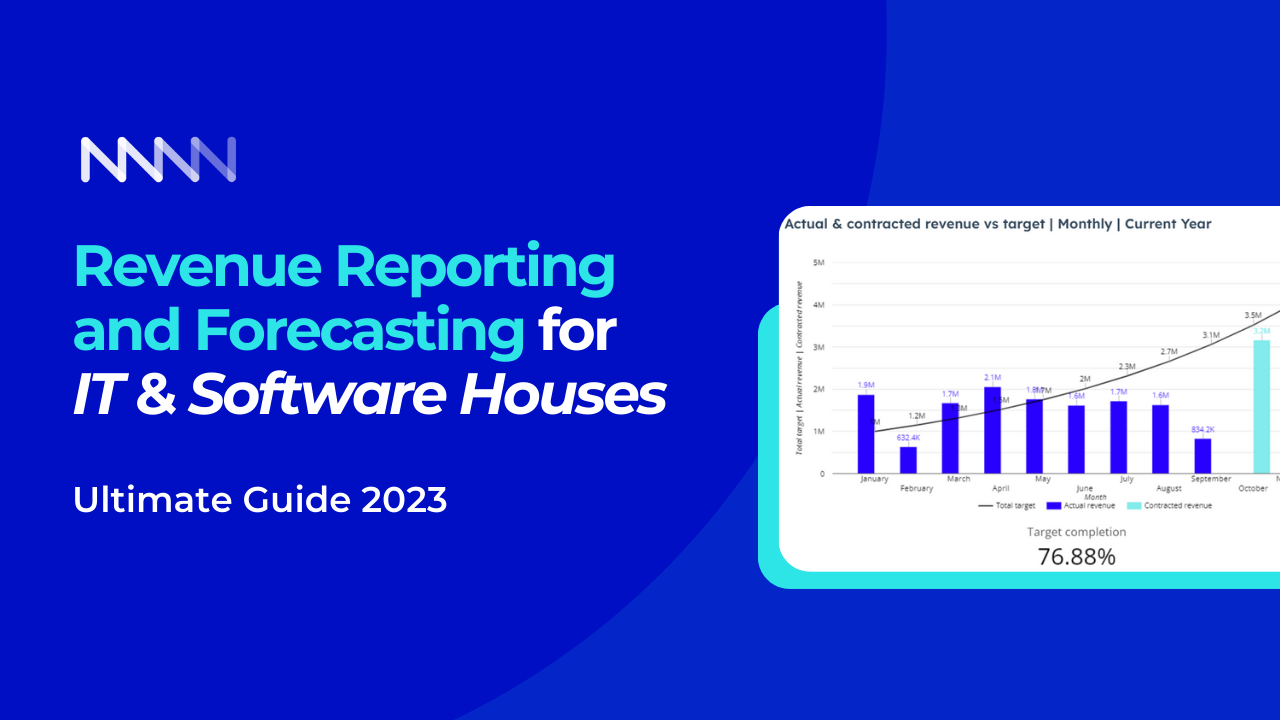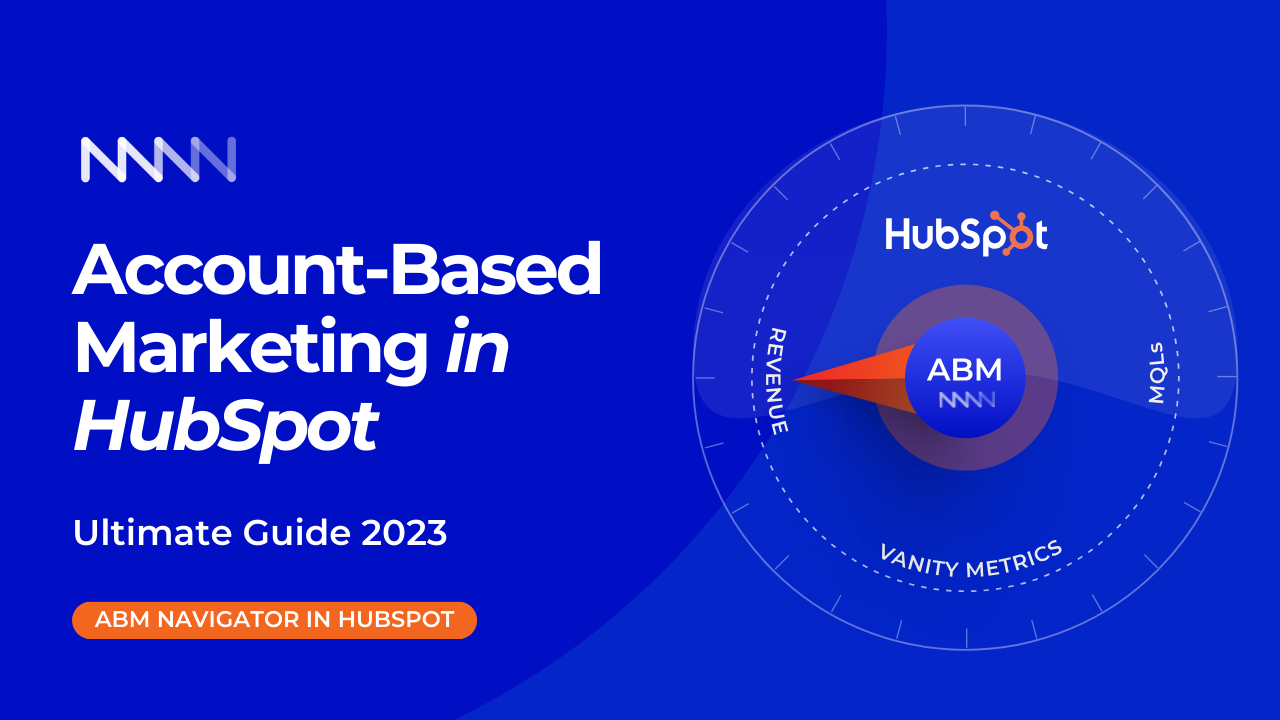Ultimate Guide To Account-Based Strategy
Account-based marketing is a powerful go-to-market that can make a huge difference for your pipeline. Yet, at the same time, it can be very confusing and complex.
This is why we prepared this brief guide with key steps and frameworks for building your account-based marketing strategy. All clients-tested.
Table of Contents
Part 1: Target audience
Ideal Customer Profile (ICP)
Defining the Ideal Customer Profile is the foundational step in ABM strategy. It involves creating a detailed profile of the perfect customer based on factors such as:
- firmographics (industry, revenue, location, team size, tech stack, etc.)
- buying committee (champions, decision-makers, influencers, blockers)
- account qualification (what makes an account a good fit)
- account disqualification (what makes an account a bad fit)
The ICP sets the stage for solution-driven and relevant communication in your ABM strategy.
Target Account Listing
Next, based on your ICP compile a list of high-potential target accounts.
When saying high potential, we don't mean a wishlist of dreamed accounts you hope to work with in the future (hope is a strategy of fools).
What we mean here is to identify businesses that fit your tight criteria, and have a potential need for your service (thus, are more likely to buy).
 (Targeted accounts from The Account-based marketing strategy)
(Targeted accounts from The Account-based marketing strategy)
Buying Group Hierarchy
A buying group is the people that influence your deal inside target accounts.
This is why mapping their hierarchy is crucial as you need to influence all of them to increase your odds of making a sale.
(Targeted accounts from The Account-based marketing strategy)
Below, you can find a brief description of each of the buying group members.
1. Champions: Lead initial product/vendor research, attending discovery calls and providing comparison reports.
In SMBs, the Champion and Decision-maker may be the same person, often the CEO.
In mid-size and enterprise companies, champions are end-users or key collaborators, such as VPs of Marketing or CMOs.
2. Decision-makers: Approve deals and budgets.
In SMBs, they actively participate in negotiations, while in mid-size and enterprise, they delegate to Champions.
Decision-makers are typically senior executives who finalize and approve the deal and budget.
3. Influencers: Although not directly involved in research or negotiations, hold sway over the deal.
Their opinions are often shared during team meetings, impacting the decision.
For instance, an external business consultant may influence a CEO positively by highlighting the benefits of a product.
4. Blockers: Committee members resistant to your solution.
They may not see its value or perceive it as a threat. In the example, the Chief Information Officer serves as a blocker, expressing doubts about the solution's worth and suggesting alternative uses for the budget.
Buying Personas
Buying personas are detailed profiles of the buying committee members. They help you understand their:
- Responsibilities
- Key goals
- Challenges
- Decision criteria
As a result, you're able to tailor your ABM content to every one of them, influencing their decision-making process.
(Targeted accounts from The Account-based marketing strategy)
Buying Journey
The buying journey is a process that your buyers go through from the initial awareness of a product or service to making a purchase decision.
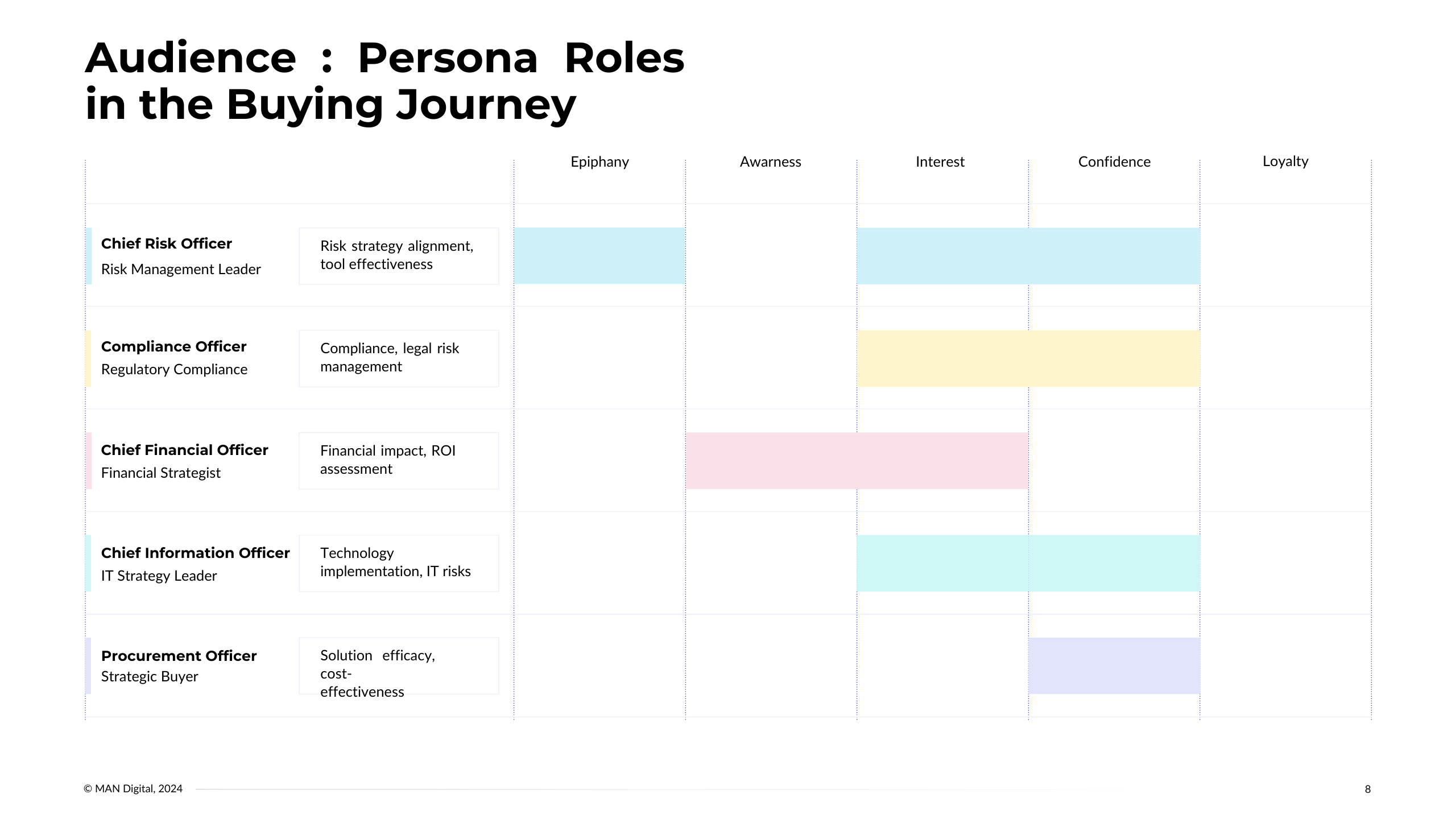 (Persona roles in the buying journey from the ABM Strategy Template)
(Persona roles in the buying journey from the ABM Strategy Template)
Below you can find a brief description of the buying journey stages:
- Epiphany: Consumers recognize a need or problem, sparking the beginning of their buying journey.
- Awareness: Research begins as consumers become aware of potential solutions and explore available options.
- Interest: Focused interest develops as consumers delve deeper into specific products or services.
- Confidence: Consumers evaluate and compare options, seeking assurance before making a purchase decision.
- Loyalty: Post-purchase, satisfied customers become loyal through positive experiences, potentially leading to repeat business and advocacy.
For a successful ABM campaign, you want to tailor content and engagements for each persona at every stage of their buying journey.
It's important to note that these stages may not always occur linearly. Buyers might move back and forth between stages based on their experiences and interactions.
Part 2: Campaign narrative
ABM Campaign Narrative Theme
The narrative is a central story that guides your ABM communication and connects with the target audience. It has to mirror your buyer's reality to truly resonate.
To achieve that effect you should deeply understand their industry dynamics and market challenges.
Learn what makes them special, showcase your understanding of their current priorities, and how your solution fits in.
Below you can find a proven framework from the ABM Strategy we're using when building narratives for campaigns of our clients:
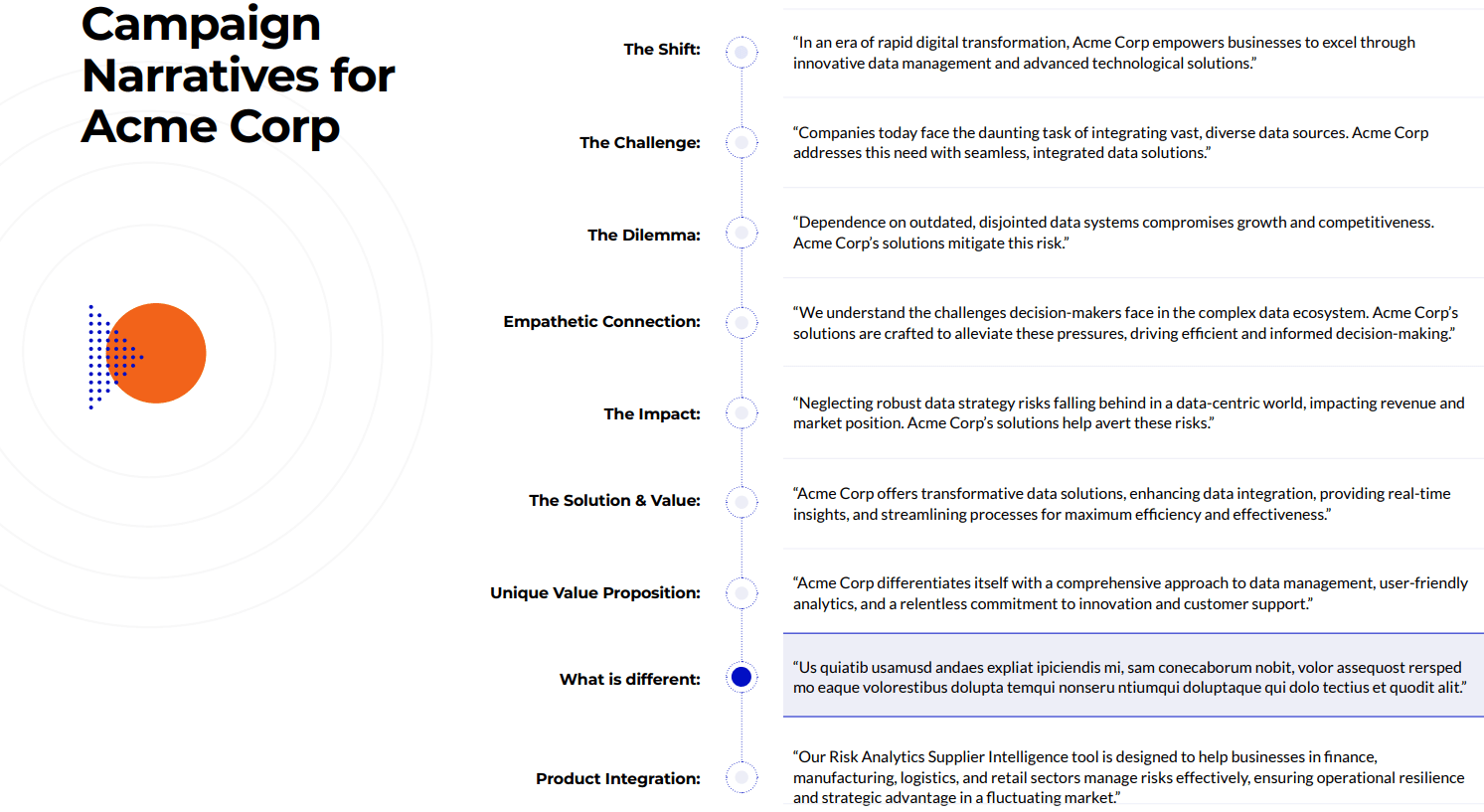 (Campaign narratives from the Account-based marketing strategy)
(Campaign narratives from the Account-based marketing strategy)
Value Proposition
What kills ABM campaigns is the generic value proposition. Remember, you're selling to a group of people, not a single persona.
This is why value proposition should communicate how your solution addresses the specific needs at each level of the organization, from top-level strategy to day-to-day operations.
So, instead of making a single statement as your value prop, you can use a hierarchy:
 (Value proposition hierarchy from the ABM Strategy Template)
(Value proposition hierarchy from the ABM Strategy Template)
- 𝐒𝐭𝐫𝐚𝐭𝐞𝐠𝐢𝐜 𝐋𝐞𝐯𝐞𝐥 (𝐂-𝐒𝐮𝐢𝐭𝐞): The target audience here is the executive decision-makers.
Communicate how your solution may support the company's strategic goals. - 𝐓𝐚𝐜𝐭𝐢𝐜𝐚𝐥 𝐋𝐞𝐯𝐞𝐥 (𝐌𝐚𝐧𝐚𝐠𝐞𝐫𝐬: The target audience here is the middle-management.
Tell how your solution helps hit their near-term goals/projects resulting from the company’s strategy. - 𝐎𝐩𝐞𝐫𝐚𝐭𝐢𝐨𝐧𝐚𝐥 𝐋𝐞𝐯𝐞𝐥 (𝐓𝐞𝐚𝐦𝐬): The target audience here is the end-users of your solution.
Show how your solution makes their job easier in day-to-day running.
Part 3: ABM programs
ABM program is a structured way of engaging with buyers within the targeted accounts. In the ABM strategy, we distinguish 3 different programs:
- Awareness program: introducing your brand and solution to the buyers who don't know you.
- Nurturing program: deepening the relationship with the buyers who know you by providing them with personalized and relevant content.
- Engagement program: positioning yourself as a trusted advisor by addressing buyers' key challenges/questions.
As an example, let's say that ACME Corp's main "hook" for the ABM campaign is a virtual event called "Navigating The Risk Landscape".
Through this event, ACME wants to showcase its solution to supplier managers, procurement officers, and compliance experts within target accounts.
Below you can see an example of the awareness program they can build based on that.
Awareness Program
In the first step, use LinkedIn ads and outreach to increase registrations for the event.
Outcome:
Increased registration from the event from the contacts that match your ICP.
Tactics:
-
Account targeting: Utilize LinkedIn ads focused on unknown contacts within target accounts.
-
Layer account intent: Enhance targeting by identifying accounts showing intent signals related to risk management and compliance.
-
Contact targeting: serve tailored ads to known contacts to refresh and reinforce value proposition.
-
Retargeting social ads: Implement retargeting campaigns to re-engage website visitors.
-
Sales outreach: Coordinate with sales to provide supportive touches to accounts engaged through marketing efforts.
Measurement:
- Progression in the account engagement funnel, tracking from initial awareness to interest
- Key account and user engagement metrics, monitoring interactions and responses to marketing efforts
- Creation of open opportunities, tracking leads that move into the sales pipeline
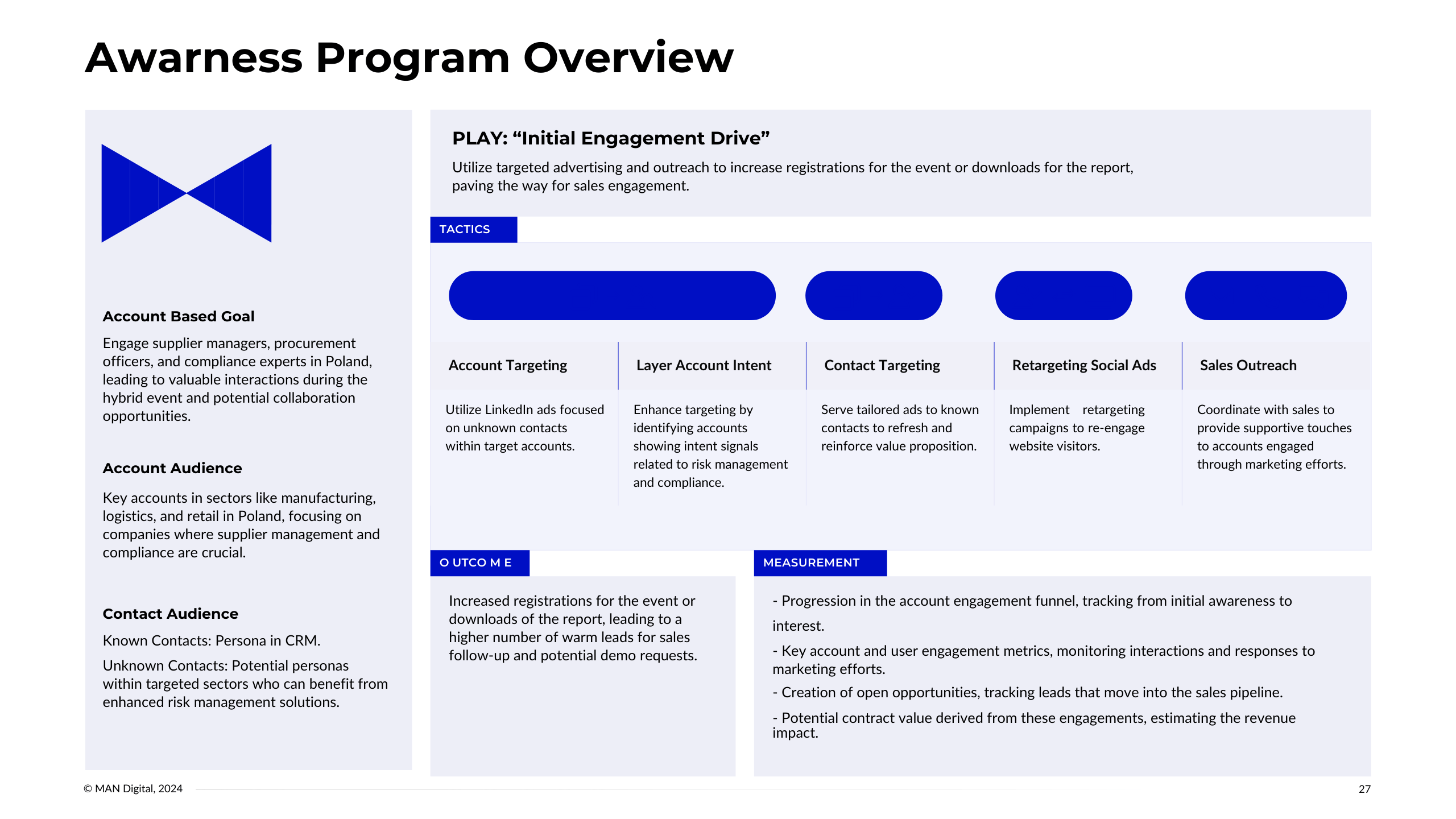 (Awareness Program from the ABM Strategy Template)
(Awareness Program from the ABM Strategy Template)
Part 4: Communication plan
A communication plan is a structured approach to engage your target audience through specific channels and formats. It runs concurrently with ABM programs, enhancing their impact.
In ABM Strategy, we distinguish paid and organic plans.
Here's an example of organic communication to build thought leadership and promote ACME's event on LinkedIn.
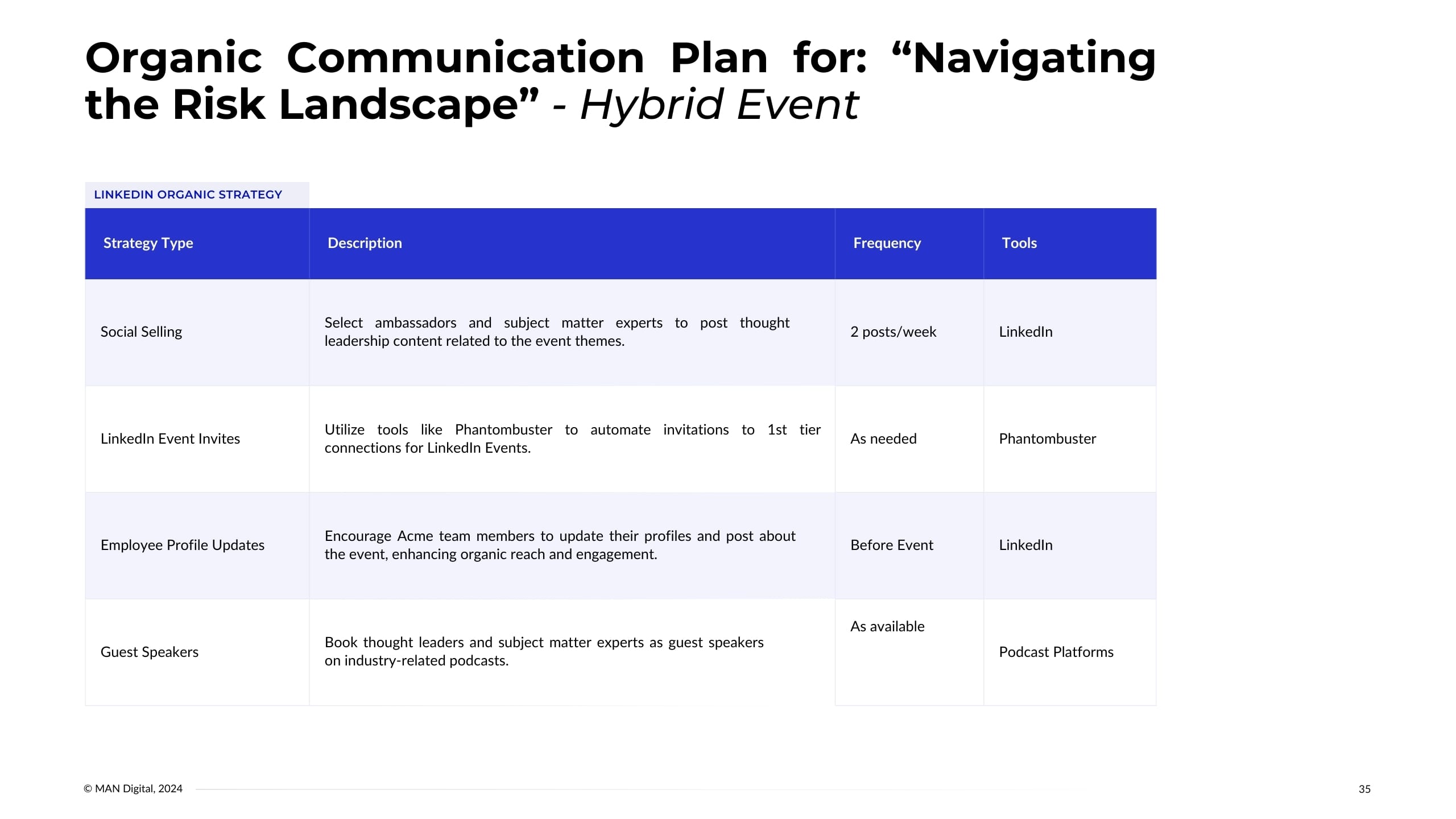 (Organic communication plan from the ABM Strategy Template)
(Organic communication plan from the ABM Strategy Template)
Sales Outreach
Effective ABM campaign requires coordination of sales and marketing engagements.
Let's stick to the virtual event as an example.
First, you create a first-party, educational intent with your company (buyers are interested in your content).
Second, you warm up the accounts and make your SDRs job easier.
Your sales get "reasons to talk", initiating conversations with buyers through personalized and relevant content rather than a cold pitch.
Here you can see an example of an advanced sales sequence for SDR teams.
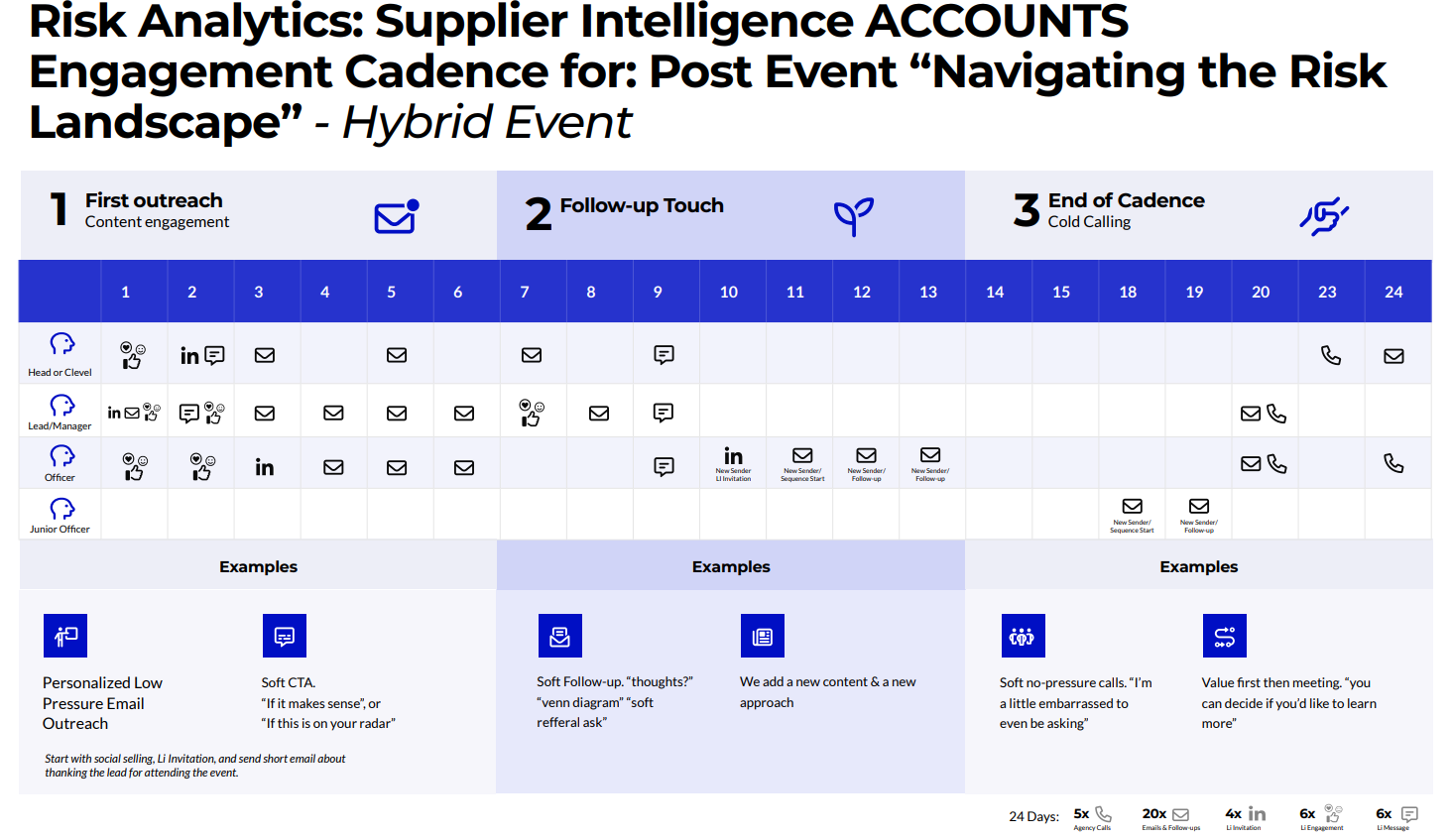 (Advanced Sales Sequence from the ABM Strategy)
(Advanced Sales Sequence from the ABM Strategy)
Part 5: ABM Campaign action plan
1. Implementation roadmap
To ensure a successful launch of your ABM campaign, you need a detailed implementation roadmap.
It's a strategic document with the specific steps and timeline for each phase of your ABM campaign
It serves as a guide for your team, ensuring a coordinated and efficient execution.
(Implementation roadmap from the ABM Strategy Template)
2. RACI chart
A RACI chart is a valuable tool to clearly define and communicate the roles and responsibilities of team members involved in executing the ABM campaign.
Here's how to build a RACI chart in practice:
-
Identify stakeholders: Key team members for the ABM campaign.
-
Set milestones: Key deliverables for each phase of the ABM campaign launch.
-
Define success metrics: How you will measure the effectiveness of tasks performed.
-
Assign RACI Roles:
- Responsible (R): Task executors.
- Accountable (A): Decision-makers.
- Consulted (C): Those providing input.
- Informed (I): Those kept in the loop.
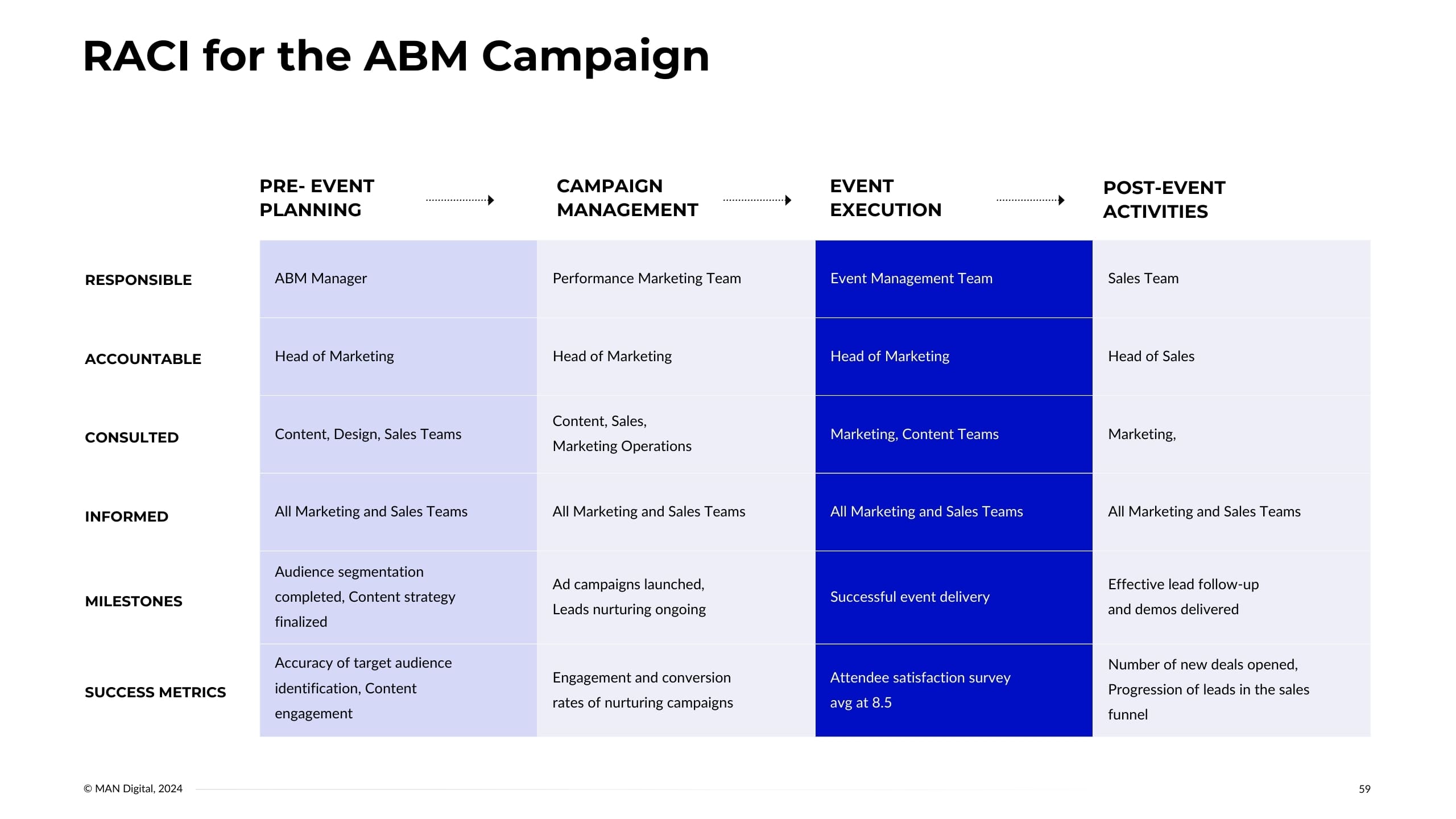
Part: 6 ABM business case scenarios
In your ABM strategy, you should include three scenarios considering various outcomes and situations impacting campaign success.
It will help you set realistic expectations and enhance risk management.
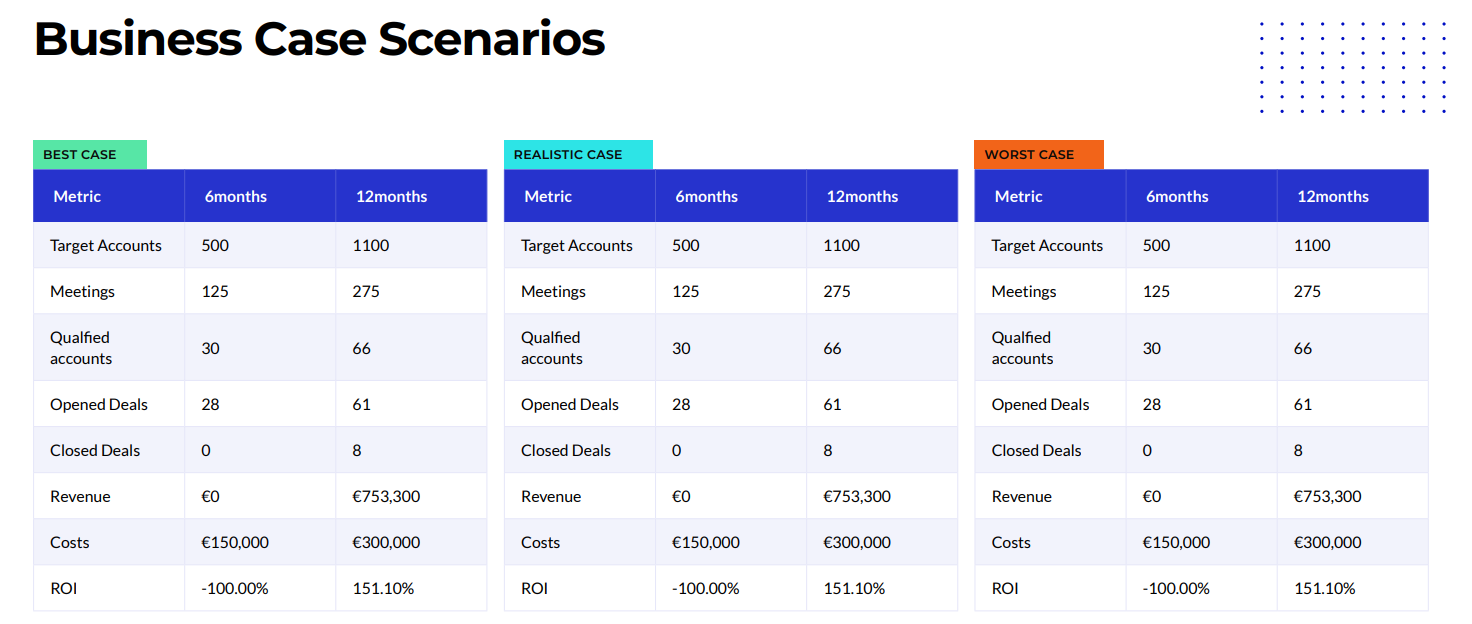
(Business case scenarios from the ABM Strategy template)Summary
Closing remarks
Account-based marketing is a complex go-to-market motion, not a single tactic.
Do you need help with kick-starting your first campaign or refining the existing one?
Talk with one of our ABM experts: contact us here.

